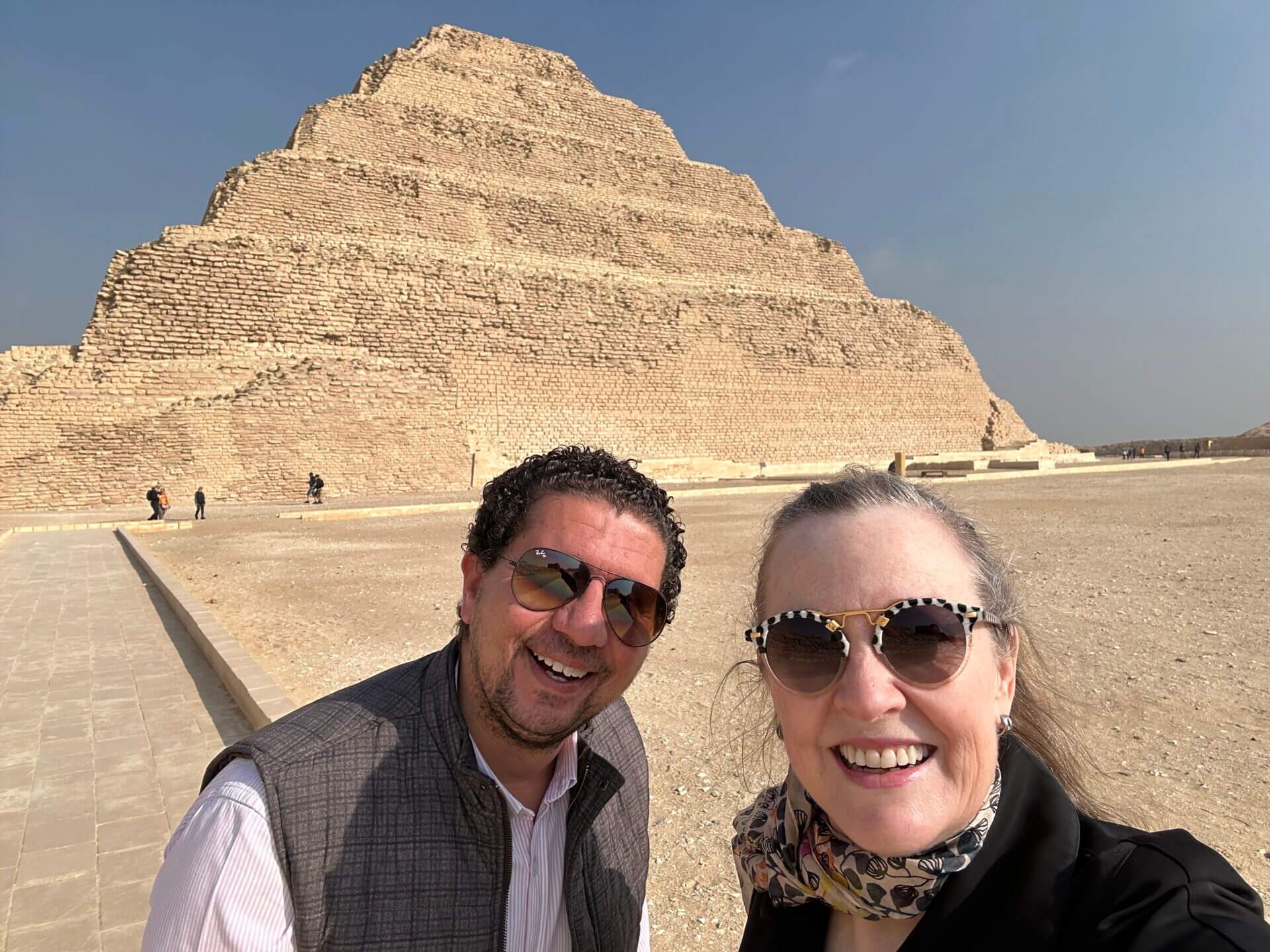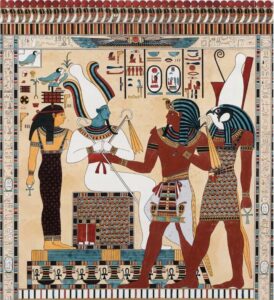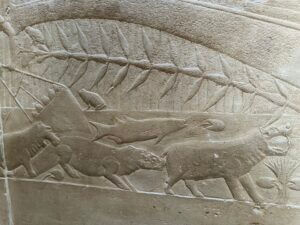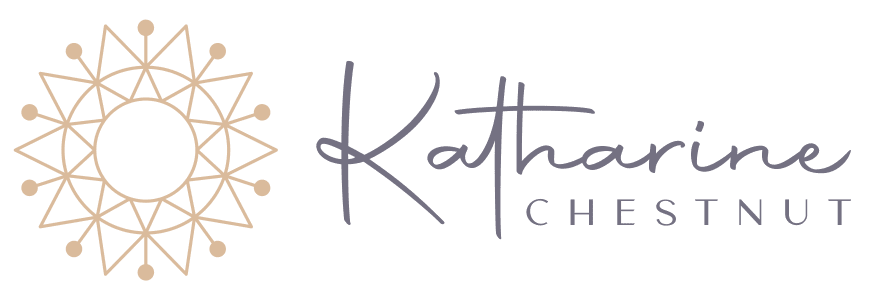
Kemetic Spirituality: Egyptian Interconnection and Modern Practice
When I decided to visit Cairo last year, never did I expect to discover a new (or rather ancient) spiritual practice. However, when visiting the step pyramid, I was overcome with an incredible peace and calm.
As my guide told me more about the ceremonies held at the foot of the pyramid, I could feel the power of those rituals from (many, many) centuries gone by.
After that very real experience, I knew I wanted to know more about the spiritual practices of the ancients.
I discovered Kemetic spirituality and learned that it is based on an intriguing and profound path that draws from the rich well of Ancient Egyptian religious and philosophical practices. It offers a deep interconnection between life and the transcendent, anchored in the belief systems of one of the oldest civilizations in history.
As I explored more, I uncovered a worldview where every aspect of existence is infused with spiritual significance, from the mightiest temple to the simplest daily ritual.
The core of Kemetic spirituality lies in its emphasis on living in harmony with Ma’at, the cosmic principle of truth, balance, and order. This principle guided the ancient Egyptians in both their personal lives and the larger societal context, reflecting a culture that valued the interplay between the human and divine realms.
My journey involved learning more about the legacy of this ancient culture through ceremonies, symbolic representations, and an appreciation for the natural world imbued with spiritual meaning.
Key Takeaways
- Kemetic spirituality connects you to the profound traditions of Ancient Egypt.
- It centers on harmonizing with the universal principles of balance and order.
- Engaging with this spiritual path can enrich your understanding of symbols and rituals.
Foundations of Kemetic Spirituality
This is an ancient Egyptian approach to understanding the universe that centers on the concepts of harmony and balance. This traditional spirituality still thrives and adapts in the modern world.

Concept of Ma’at and Order
Ma’at represents the foundational principle, embodying truth, balance, order, and justice. It is often depicted as a goddess with a feather upon her head and is considered vital for the universe’s stability. Your adherence to Ma’at ensures harmony in your life and aligns you with the cosmic order.
Role of Gods and Goddesses
The deities, or neteru (gods and goddesses), are more than mythic figures; they are essential elements of existence, each embodying different aspects of the universe.
Your relationship with these entities can be personal and direct, allowing for a deeper understanding of concepts like creation, wisdom, and love present in the universe.
Kemetism in Modern Practice
Kemetism in the modern world is a revival of these ancient practices. It has taken on various forms, including Kemetic Orthodoxy and Neterism, where you can find a structured hierarchy and shared rituals.
This spirituality nourishes a connection to the ancestors and enriches personal beliefs in the continuity of the ancient wisdom of Kemet, or the land now known as Egypt, within your own life.
Rituals and Ceremonies
Your connection to the divine is enriched through various rituals and ceremonies, often mirroring the practices of ancient Egypt.
Each act, from the offerings you make to the festivals you attend, strengthens your bond with the gods and your community.
Sacred Rituals and Offerings
I found the act of presenting offerings to the gods at an altar to be a core spiritual practice in Kemetic spirituality. These offerings typically include food, which could range from fruits to baked goods, and libations such as water or wine.
The act itself symbolizes your respect and gratitude, establishing a reciprocal relationship with the divine.
When making an offering, it’s essential to do so with clarity of intent, as this forms the heart of your worship and spiritual engagement.
Festivals and Community Gatherings
Festivals play a significant role in bringing the community together to celebrate and honor the gods. Each festival has its unique rituals that involve prayers, communal offerings, and celebratory activities.
For example, during the Feast of Opet, you might participate in processions and contribute to the collective offerings given to the temples, which helps to reinforce the sense of community and shared spiritual practices.
I didn’t find much locally back in the US but if you do a little digging, you’ll find some meetups.
Personal Spiritual Practices
Kemetic spirituality is not limited to grand ceremonies; it also encompasses daily spiritual practices that you can perform on your own.
This might involve personal prayers and meditations, meditations such a breath work or active meditations (like walking). Something that many of us, including me, do on a daily basis.
You might create a small altar within your home for daily worship, or studying ancient texts to deepen your understanding.
The bottom line here is to maintain a personal connection to the gods and integrating spirituality into your daily life.
Symbolism and Connection to Nature
My favorite part of learning more was find a wealth of symbolism interwoven with nature, demonstrating an intricate connection between the spiritual beliefs of Ancient Egypt and the natural world around them.
Through understanding the Nile and various animal representations, you’ll see how deeply nature influenced their cosmology and religious practices.
The Significance of the Nile
The Nile River was the lifeblood of Ancient Egypt, central to both its survival and spirituality. You’d see the Nile as more than just a river; it was a symbol of life, fertility, and renewal.
It’s said that the annual flooding of the Nile, which deposited nutrient-rich silt onto the land, was celebrated as a divine event. This connection is evident in symbols like the ankh, which represents life and was often depicted with Nile water nourishing the land.
The river’s cyclical nature also corresponded with the idea of rebirth and the afterlife, possibly reflected in the djed pillar, a symbol of stability and enduring life.
Animals and Symbolic Representation

Animals were not just fauna to the Egyptians; they were symbols laden with meaning. Seeing some of the relief sculptures I saw carved into the walls of homes were a testament to this belief system.
Birds like the ibis and the hawk were also significant, the former associated with wisdom and writing, the latter with the sun god Ra.
Consider the scarab beetle, a representation of the sun and creation, pushing the sun across the sky like a ball of dung. Other animals, such as lions, were associated with strength and power, while cats were seen as protectors, their images used to ward off evil spirits.
The reverence for these creatures underscores their belief that animals were manifestations of the divine, with each holding an important place in the grand tapestry of Kemetic nature and land.
Intersections with Other Faiths
I also found intriguing connections with major world religions, particularly the Abrahamic faiths. These interconnections can provided a deeper understanding of those religious history and practices.
Kemetic Spirituality and Abrahamic Religions
Kemetic Influence on Judaism: The foundations of Judeo-Christian practice may be more intertwined with ancient Egyptian beliefs I initially realized.
For example, the concept of Ma’at in Kemetic spirituality—embodying truth, justice, and cosmic order—shares parallels with the principles of ethical righteousness in Judaism.
Kemetic Elements in Christianity: While the Christian faith has unique tenets, some rituals and symbols have been suggested to echo ancient Egyptian practices.
Early Christian iconography sometimes depicted the Madonna and Child in a manner reminiscent of the Egyptian goddess Isis cradling her son Horus, reflecting an artistic interconnection between these cultures.
Through these intersections, I found that the spiritual path I walk is rich with influences from various religious traditions. This was always something I recognized but seeing it, first hand, offered me more interconnection with the very human pursuit of the sacred.





